Volatility, Growth and Financial Crises
This research group analyses the build-up of financial vulnerabilities and real consequences of financial crises. Different policy shocks and the causal reaction of macroeconomic aggregates are identified. Early-warning models describe the cyclical nature of financial vulnerabilities.
IWH Data Project: Financial Stability Indicators in Europe
Research Cluster
Financial Resilience and RegulationYour contact

- Department Macroeconomics
EXTERNAL FUNDING
01.2022 ‐ 12.2023
Sovereign Risk Shocks
05.2017 ‐ 09.2019
Early Warning Models for Systemic Banking Crises: The Effect of Model and Estimation Uncertainty
01.2018 ‐ 12.2018
International Monetary Policy Transmission
Refereed Publications
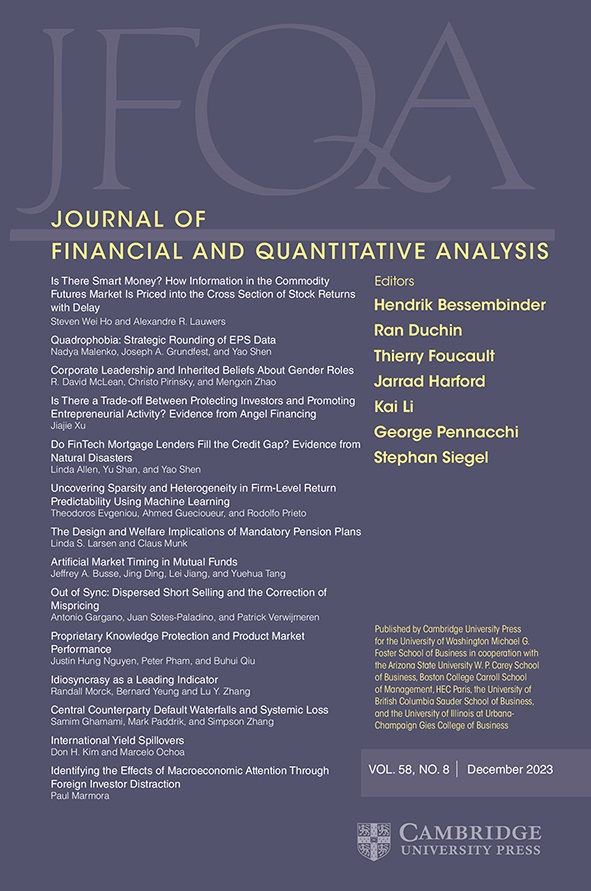
Spillover Effects among Financial Institutions: A State-dependent Sensitivity Value-at-Risk Approach
in: Journal of Financial and Quantitative Analysis, No. 3, 2014
Abstract
In this paper, we develop a state-dependent sensitivity value-at-risk (SDSVaR) approach that enables us to quantify the direction, size, and duration of risk spillovers among financial institutions as a function of the state of financial markets (tranquil, normal, and volatile). For four sets of major financial institutions (commercial banks, investment banks, hedge funds, and insurance companies) we show that while small during normal times, equivalent shocks lead to considerable spillover effects in volatile market periods. Commercial banks and, especially, hedge funds appear to play a major role in the transmission of shocks to other financial institutions.
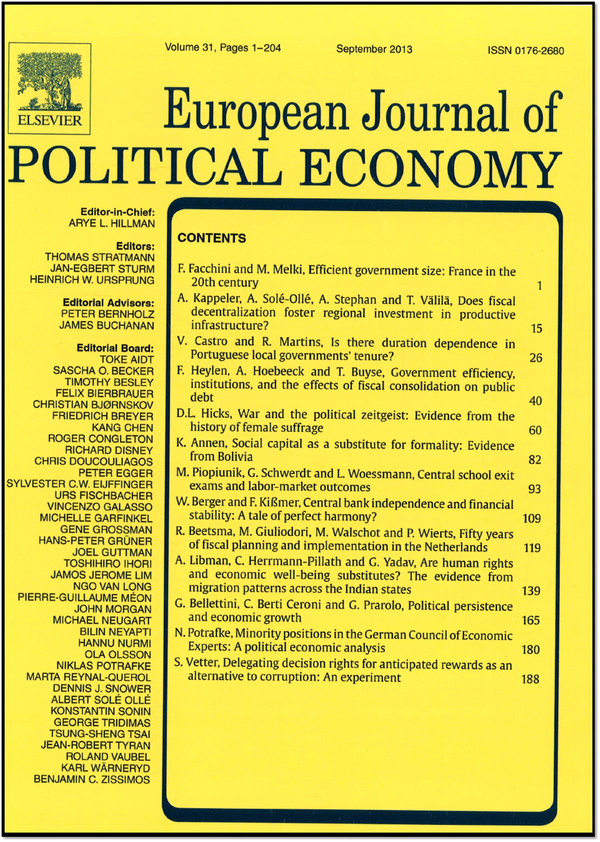
The Impact of Preferences on Early Warning Systems - The Case of the European Commission's Scoreboard
in: European Journal of Political Economy, 2014
Abstract
The European Commission’s Scoreboard of Macroeconomic Imbalances is a rare case of a publicly released early warning system. It allows the preferences of the politicians involved to be analysed with regard to the two potential errors of an early warning system – missing a crisis and issuing a false alarm. These preferences might differ with the institutional setting. Such an analysis is done for the first time in this article for early warning systems in general by using a standard signals approach, including a preference-based optimisation approach, to set thresholds. It is shown that, in general, the thresholds of the Commission’s Scoreboard are set low (resulting in more alarm signals), as compared to a neutral stand. Based on political economy considerations the result could have been expected.

Explosive Preisentwicklung und spekulative Blasen auf Rohstoffmärkten
in: ORDO, No. 64, 2013
Abstract
In dieser Studie wird untersucht, ob die Preisentwicklung auf Rohstoffmärkten statistische Anhaltspunkte für spekulative Preisblasen liefert. Diese Frage ist von zentraler Bedeutung in der wirtschaftspolitischen Debatte um die Regulierung des Handels von Rohstoffen. Es kann statistisch gezeigt werden, dass sich Rohstoffpreise gelegentlich explosiv verhalten. Die stärkste Evidenz für explosives Verhalten gibt es bei den Industrierohstoffen. Auch bei Nahrungsmittelpreisen können Phasen explosiven Verhaltens statistisch nachgewiesen werden. Eine wichtige Schlussfolgerung ist, dass die Ursachen explosiven Verhaltens auf Rohstoffmärkten und die Effekte von Preisblasen auf die Entscheidungen von Konsumenten und Investoren sowie Verteilungseffekte systematisch untersucht werden müssen.

Exchange Rate Regime, Real Misalignment and Currency Crises
in: Economic Modelling, No. 34, 2013
Abstract
Based on 69 sample countries, this paper examines the effect of macroeconomic fundamentals on real effective exchange rates (REER) in these sample countries. Using the misalignment of actual REER from its equilibrium level, we have estimated the factors explaining the extent of currency over- or under-valuation. Overall, we find that the higher the flexibility of the currency regime, the lower is the misalignment. The estimates are robust to different sub-samples of countries. We then explore the impact of such misalignment on the probability of a currency crisis in the next period, indicating the extent to which misalignment could be used as a leading indicator of a potential crisis. This paper thus makes a new contribution to the debate on the choice of exchange rate regime by bringing together real exchange rate misalignment and currency crisis literature.
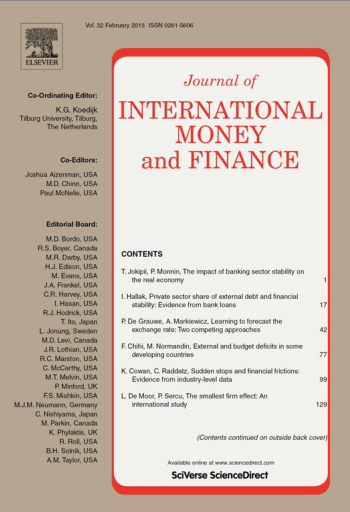
Predicting Financial Crises: The (Statistical) Significance of the Signals Approach
in: Journal of International Money and Finance, No. 35, 2013
Abstract
The signals approach as an early-warning system has been fairly successful in detecting crises, but it has so far failed to gain popularity in the scientific community because it cannot distinguish between randomly achieved in-sample fit and true predictive power. To overcome this obstacle, we test the null hypothesis of no correlation between indicators and crisis probability in three applications of the signals approach to different crisis types. To that end, we propose bootstraps specifically tailored to the characteristics of the respective datasets. We find (1) that previous applications of the signals approach yield economically meaningful results; (2) that composite indicators aggregating information contained in individual indicators add value to the signals approach; and (3) that indicators which are found to be significant in-sample usually perform similarly well out-of-sample.
Working Papers
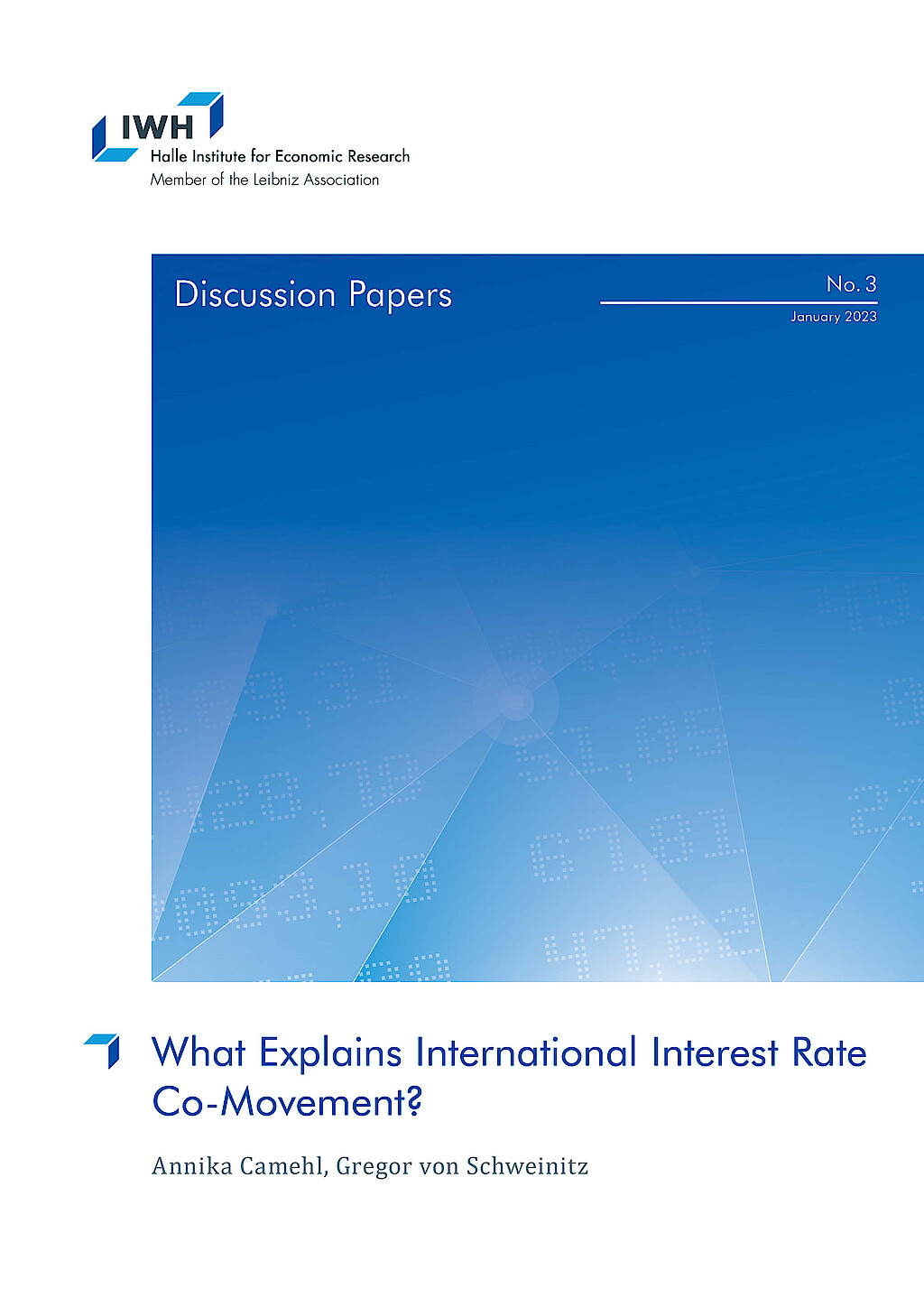
What Explains International Interest Rate Co-Movement?
in: IWH Discussion Papers, No. 3, 2023
Abstract
We show that global supply and demand shocks are important drivers of interest rate co-movement across seven advanced economies. Beyond that, local structural shocks transmit internationally via aggregate demand channels, and central banks react predominantly to domestic macroeconomic developments: unexpected monetary policy tightening decreases most foreign interest rates, while expansionary local supply and demand shocks increase them. To disentangle determinants of international interest rate co-movement, we use a Bayesian structural panel vector autoregressive model accounting for latent global supply and demand shocks. We identify country-specific structural shocks via informative prior distributions based on a standard theoretical multi-country open economy model.

The Impact of Active Aggregate Demand on Utilisation-adjusted TFP
in: IWH Discussion Papers, No. 9, 2022
Abstract
Non-clearing goods markets are an important driver of capacity utilisation and total factor productivity (TFP). The trade-off between goods prices and household search effort is central to goods market matching and therefore drives TFP over the business cycle. In this paper, I develop a New-Keynesian DSGE model with capital utilisation, worker effort, and expand it with<i> goods market search-and-matching (SaM)</i> to model non-clearing goods markets. I conduct a horse-race between the different capacity utilisation channels using Bayesian estimation and capacity utilisation survey data. Models that include goods market SaM improve the data fit, while the capital utilisation and worker effort channels are rendered less important compared to the literature. It follows that TFP fluctuations increase for demand and goods market mismatch shocks, while they decrease for technology shocks. This pattern increases as goods market frictions increase and as prices become stickier. The paper shows the importance of non-clearing goods markets in explaining the difference between technology and TFP over the business cycle.
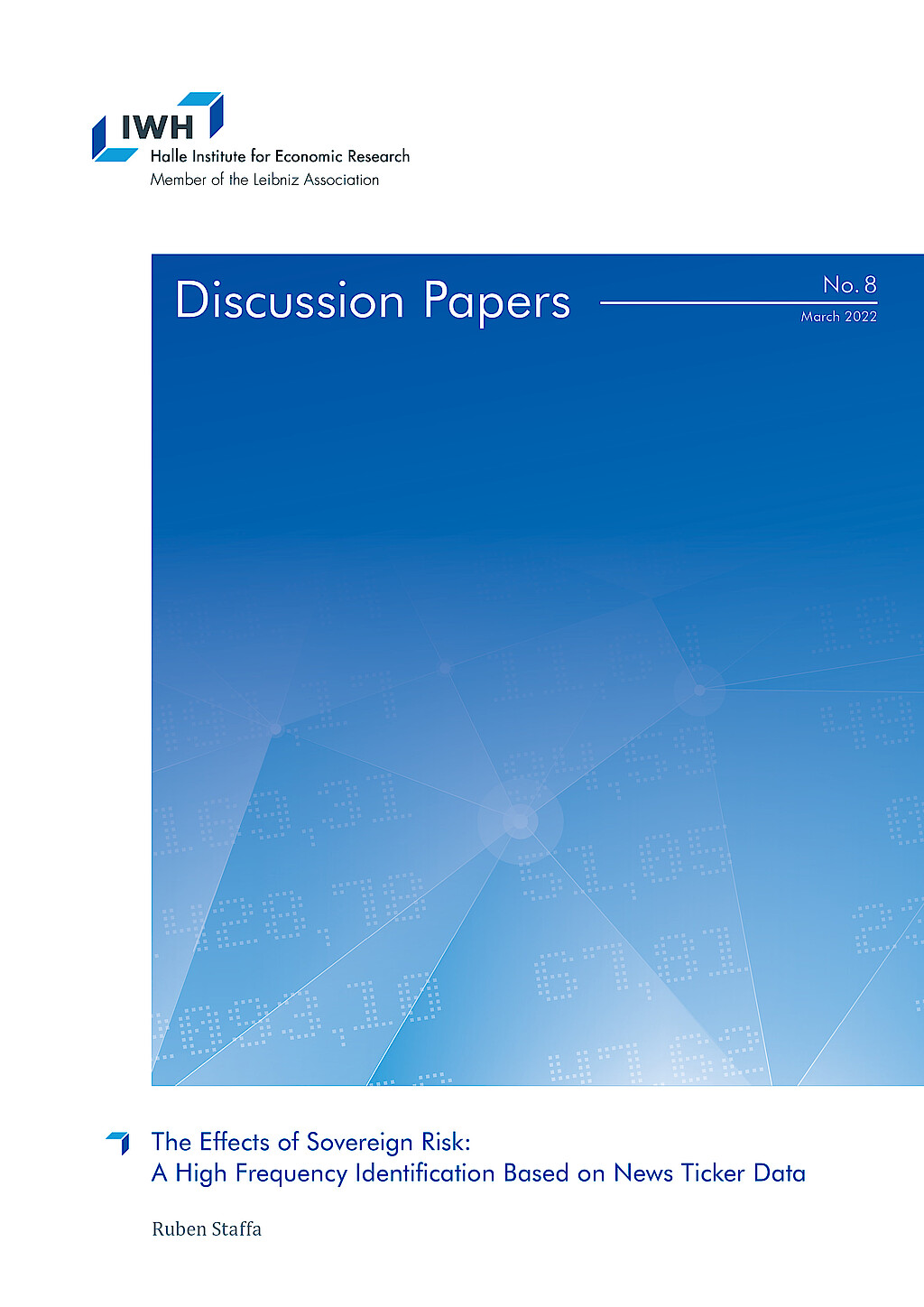
The Effects of Sovereign Risk: A High Frequency Identification Based on News Ticker Data
in: IWH Discussion Papers, No. 8, 2022
Abstract
This paper uses novel news ticker data to evaluate the effect of sovereign risk on economic and financial outcomes. The use of intraday news enables me to derive policy events and respective timestamps that potentially alter investors’ beliefs about a sovereign’s willingness to service its debt and thereby sovereign risk. Following the high frequency identification literature, in the tradition of Kuttner (2001) and Guerkaynak et al. (2005), associated variation in sovereign risk is then obtained by capturing bond price movements within narrowly defined time windows around the event time. I conduct the outlined identification for Italy since its large bond market and its frequent coverage in the news render it a suitable candidate country. Using the identified shocks in an instrumental variable local projection setting yields a strong instrument and robust results in line with theoretical predictions. I document a dampening effect of sovereign risk on output. Also, borrowing costs for the private sector increase and inflation rises in response to higher sovereign risk.
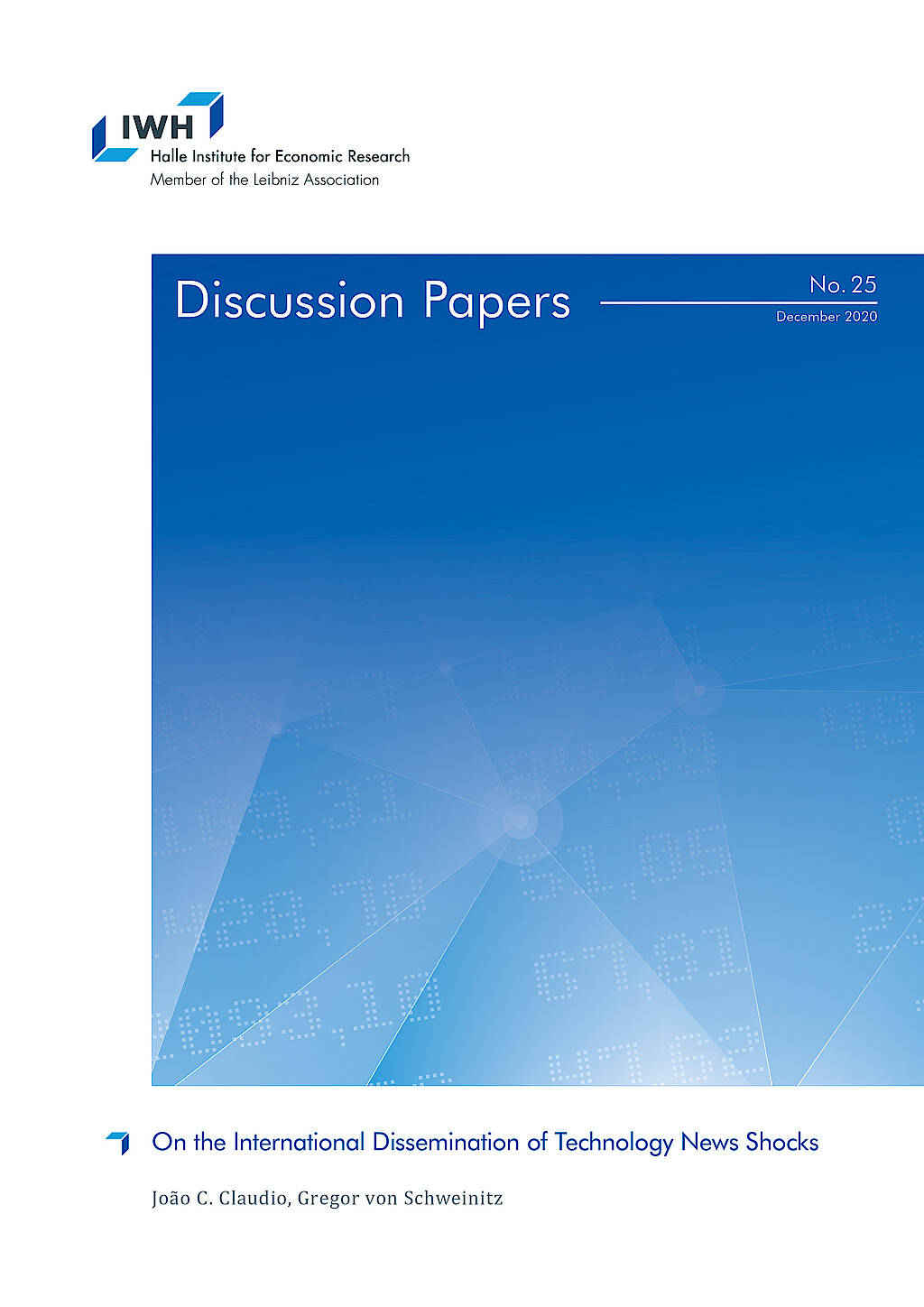
On the International Dissemination of Technology News Shocks
in: IWH Discussion Papers, No. 25, 2020
Abstract
This paper investigates the propagation of technology news shocks within and across industrialised economies. We construct quarterly utilisation-adjusted total factor productivity (TFP) for thirteen OECD countries. Based on country-specific structural vector autoregressions (VARs), we document that (i) the identified technology news shocks induce a quite homogeneous response pattern of key macroeconomic variables in each country; and (ii) the identified technology news shock processes display a significant degree of correlation across several countries. Contrary to conventional wisdom, we find that the US are only one of many different sources of technological innovations diffusing across advanced economies. Technology news propagate through the endogenous reaction of monetary policy and via trade-related variables. That is, our results imply that financial markets and trade are key channels for the dissemination of technology.
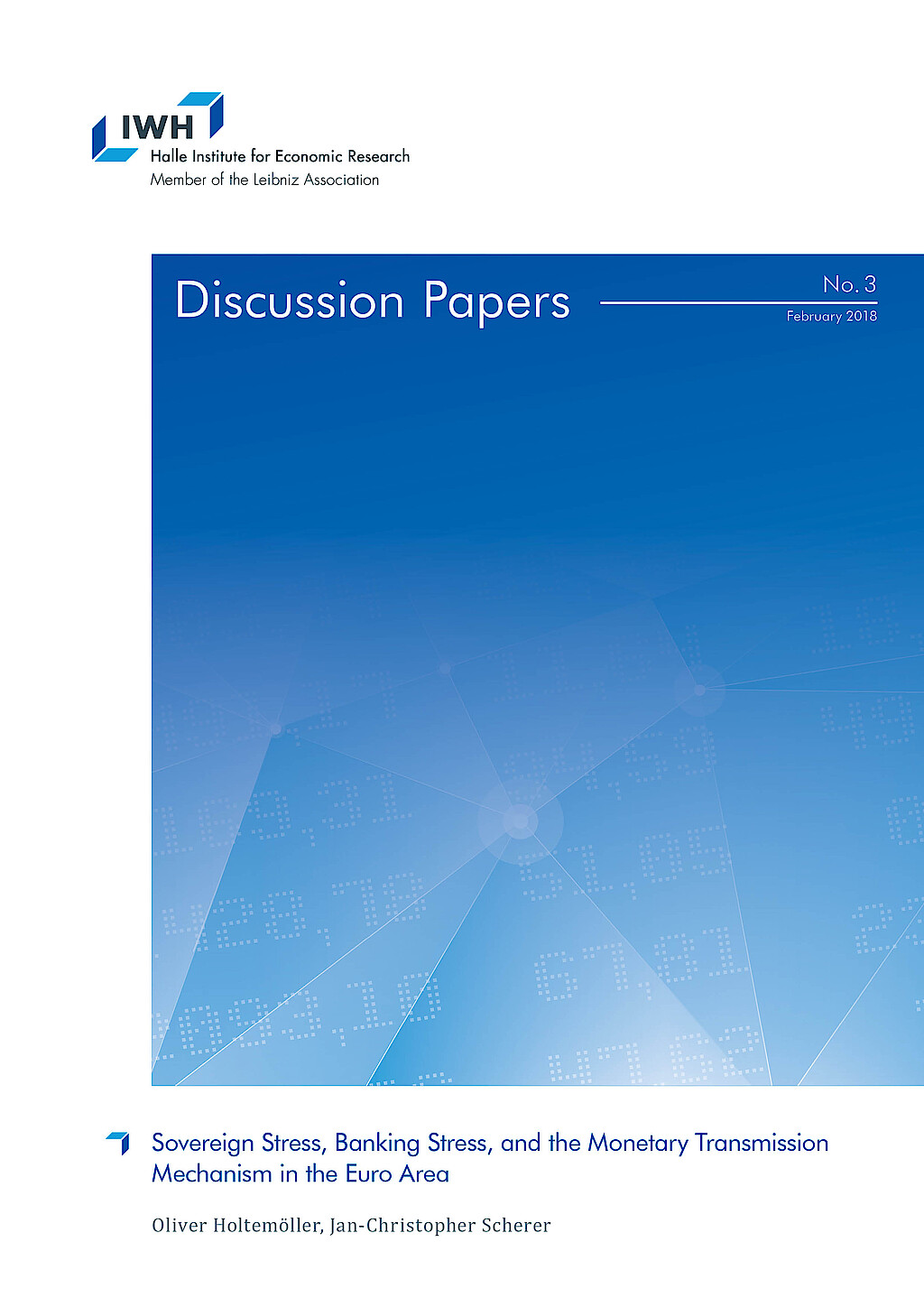
Sovereign Stress, Banking Stress, and the Monetary Transmission Mechanism in the Euro Area
in: IWH Discussion Papers, No. 3, 2018
Abstract
In this paper, we investigate to what extent sovereign stress and banking stress have contributed to the increase in the level and in the heterogeneity of nonfinancial firms’ refinancing costs in the Euro area during the European debt crisis and how they did affect the monetary transmission mechanism. We identify the increasing effect of government bond yield spreads (sovereign stress) and the share of non-performing loans (banking stress) on firms’ financing costs using an instrumental-variable approach. Moreover, we estimate both sources of stress to have significantly impaired the monetary transmission mechanism during the European debt crisis.














